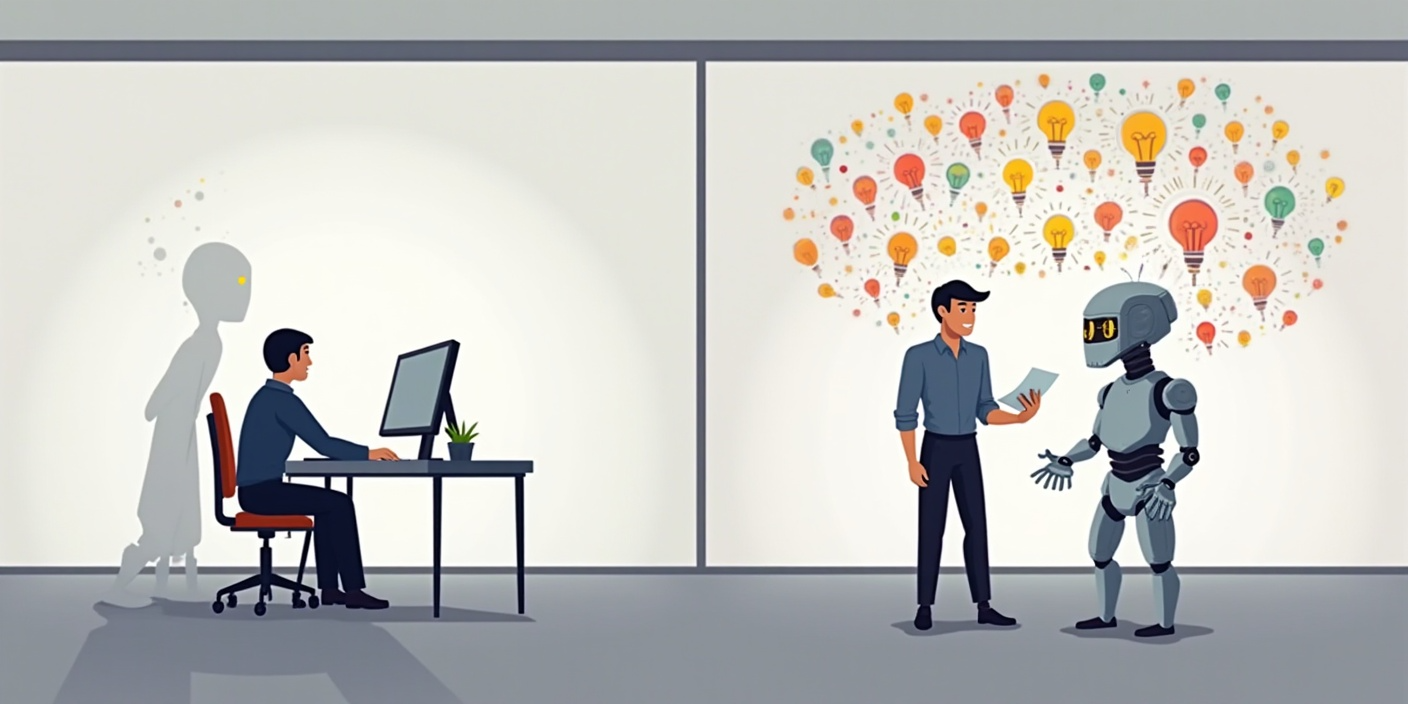Deep Research
Highlights
Top Insight
Organizations should recognize that AI is rapidly evolving beyond simple chatbots into powerful tools that can autonomously conduct high-level research, solve complex problems, and assist in decision-making. OpenAI’s Deep Research and emerging open-source alternatives demonstrate that combining reasoning capabilities with agentic frameworks can deliver results rivaling expert human analysis in minutes. This shift highlights the need for businesses to prioritize AI integration not just as a data tool but as a strategic partner for research, innovation, and operational efficiency. Firms should explore pilot projects with narrow-purpose AI agents in areas like market analysis, R&D, or competitive intelligence, while staying informed about open-source developments to mitigate reliance on proprietary systems.
Top News
1. OpenAI launched Deep Research while an open-source alternative was introduced by some researchers on Hugging Face.
2. Gemini 2.0 family of models are now widely available.
3. OpenAI announced o3-mini, a cost-efficient model for reasoning and coding.
4. Mistral introduced le Chat, an AI assistant with enterprise-grade tools.
Innovation Insights
1. The End of Search, The Beginning of Research (One Useful Thing)
AI is undergoing two major revolutions—advanced reasoning models and autonomous agents—which are now converging into systems capable of conducting expert-level research at machine speed. OpenAI’s Reasoners enhance AI’s ability to “think” before responding, making them vastly more capable, while agents, like OpenAI’s Operator, attempt to act independently toward goals but still struggle with execution due to security restrictions and task complexity. The success of OpenAI’s Deep Research, a specialized research agent, highlights the potential of narrow AI systems to produce near-PhD-level analysis, significantly outperforming Google’s competing research tool. Despite limitations such as paywall restrictions, Deep Research demonstrates AI’s growing ability to engage deeply with academic literature rather than just summarizing it. As AI models improve, the fusion of powerful reasoning with autonomous agency could soon enable digital workers capable of performing high-value research and problem-solving at a level that rivals human experts.
2. What’s next for smart glasses (MIT Technology Review)
Smart glasses are poised for mainstream adoption, driven by sleeker designs and advancements in AI agents that enhance their functionality. Major players like Meta and Google are competing to dominate the space, with Meta’s Ray-Ban partnership already proving successful and Google integrating its AI-powered Gemini chatbot into its upcoming smart glasses. The growing ease of hardware development has led to more companies, including startups and Chinese tech giants, entering the market, though brand recognition remains a key challenge. Third-party developers will play a crucial role in expanding smart glasses’ capabilities, with companies like Snap and Vuzix already opening their platforms to innovation. As AI-powered smart glasses become more interactive and practical, 2025 could be a defining year for their mass adoption.
3. Are the Internet and AI affecting our memory? What the science says (Nature)
The Internet and AI are reshaping how people learn and remember by encouraging cognitive offloading, where individuals rely on digital tools instead of internal memory. Studies show that GPS use weakens spatial memory, search engines create overconfidence in knowledge, and AI-generated content may introduce false memories. However, there is little evidence that technology is broadly deteriorating memory, as some fear. Unlike traditional memory aids, AI tools generate new information, sometimes inaccurately, making them an unreliable external memory source. The rapid evolution of AI presents new challenges, influencing personal memory, learning processes, and even shaping historical narratives, but researchers are only beginning to understand its long-term effect.
4. Harnessing Generative AI for Competitive Edge in Ecosystems (California Management Review)
AI is rapidly becoming a commodity, meaning competitive advantage no longer comes from merely having the best AI but from how businesses use it within their ecosystems. Companies can leverage AI to strengthen existing advantages or disrupt competitors by focusing on relationship, workflow, or intelligence advantages. For instance, AI-powered digital twins, as seen in CCC Intelligent Solutions, enhance intelligence advantages by improving decision-making across ecosystems. Meanwhile, AI-driven sales assistants can erode resellers’ relationship advantages by making direct customer interaction more efficient. Finally, workflow advantages can be dismantled by AI assistants that empower users with better decision-making, shifting engagement away from traditional workflows, as seen in AI-powered travel assistants from Expedia and Booking.
5. How AI is transforming strategy development (McKinsey)
AI is revolutionizing strategy development by enhancing data analysis, insight generation, and decision-making, making the process faster and more rigorous. While AI can automate many inputs and even suggest strategic options, human judgment remains critical, particularly in interpreting findings, committing to bold decisions, and mobilizing organizations. AI plays five key roles in strategy—researcher, interpreter, thought partner, simulator, and communicator—each contributing to different phases of strategy design, execution, and monitoring. However, organizations must navigate challenges such as AI bias, the need for proprietary data, and the growing importance of synthesis over raw insights. To stay competitive, strategists should develop AI literacy, integrate AI tools into their workflows, and build ecosystems of proprietary data to generate unique, high-value insights.
AI Innovations
1. Reasoning and Research
OpenAI has released o3-mini, a fast, cost-efficient AI model optimized for STEM reasoning, coding, and logical problem-solving, offering enhanced accuracy, reduced latency, and new developer features while maintaining affordability and accessibility across ChatGPT and API platforms (OpenAI).
OpenAI introduced Deep Research, an agent that synthesizes large amounts of online information and complete multi-step research tasks, available to Pro users (OpenAI).
Google DeepMind has made the Gemini 2.0 family of AI models widely available, including 2.0 Flash for efficient multimodal reasoning, 2.0 Flash-Lite for cost-effective performance, and the experimental 2.0 Pro for advanced coding and complex prompts, offering expanded capabilities like large context windows, multimodal input, and enhanced safety measures (Google).
A group of researchers has developed an open-source alternative to OpenAI’s Deep Research, leveraging agentic frameworks and AI-powered tools to improve web browsing, summarization, and complex reasoning, achieving 55.15% accuracy on the GAIA benchmark and inviting the community to contribute to further advancements (Hugging Face).
2. Hardware
OpenAI’s new trademark application hints at ambitious ventures, including humanoid robots, AI-powered consumer hardware like smart jewelry and AR/VR devices, and custom AI chips and potential quantum computing initiatives, signaling broader exploration into cutting-edge technologies beyond software (TechCrunch).
3. Consumer applications
Le Chat, a powerful and fast AI assistant, offers features like real-time information, advanced document and code analysis, image generation, personal planning, and enterprise-grade tools, making it versatile for personal and professional use, with free and paid tiers available on mobile and web (Mistral).
Apple Invites is a new app that allows iPhone users to create and share custom event invitations, manage RSVPs, contribute to shared albums, and integrate Apple Music playlists, with additional features powered by Apple Intelligence and exclusive perks for iCloud+ subscribers (Apple).
Pika’s new Pikadditions feature allows users to seamlessly add any person or object into their videos or place themselves into iconic clips, expanding creative possibilities for its 12 million users with accessible AI tools across all subscription tiers (Tom’s Guide).
Snap has developed a compact, high-speed AI text-to-image model optimized for mobile devices, capable of generating high-resolution images in 1.4 seconds on an iPhone 16 Pro Max, set to enhance Snapchat’s AI-powered features while reducing computational costs (Snap).
ByteDance’s OmniHuman AI model can generate highly realistic videos from a single photo, enabling lifelike motion, gestures, and speech, but while its advanced capabilities impress experts, concerns arise over potential misuse in deepfakes and misinformation (Forbes).
4. Security and ethics
Anthropic’s Constitutional Classifiers provide a robust defense against AI jailbreaks by using input and output classifiers trained on synthetic data, significantly reducing jailbreak success rates (from 86% to 4.4%) with minimal over-refusals and moderate compute overhead, while an ongoing live demo and bounty program aim to further stress-test and refine the system (Anthropic).
The Frontier AI Framework outlines a balanced approach to AI development, maximizing societal benefits while mitigating severe risks—particularly in cybersecurity and biosecurity—through threat modeling, risk thresholds, and open-source collaboration to enhance innovation, security, and trust in AI systems (Meta).
5. Science and medicine
MIT chemists developed ChromoGen, a generative AI model that rapidly predicts 3D genome structures from DNA sequences in minutes instead of days, enabling faster analysis of gene expression and chromatin organization (MIT).
Johns Hopkins researchers developed AbdomenAtlas, the largest AI-powered abdominal CT dataset with 45,000 scans, significantly accelerating medical image annotation and improving cancer detection by training AI models to perform at radiologist-level accuracy in some tumor identification tasks (MedicalXpress).
Other Innovations
1. Cellular atlas
Researchers have created HYPOMAP, a comprehensive cellular atlas of the human hypothalamus using single-cell RNA sequencing and spatial transcriptomics, revealing over 450 cell types, key differences from mouse models, and insights into obesity genetics and potential therapeutic targets (Nature).
2. Under the ocean
An ambitious project called Deep, funded by an anonymous investor, is transforming a flooded quarry on the Welsh border into a cutting-edge facility aimed at creating permanent human settlements under the ocean by 2027, combining advanced underwater habitats, extensive training, and innovative technology to expand marine research and human understanding of the ocean’s depths (The Guardian).







